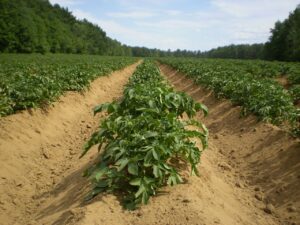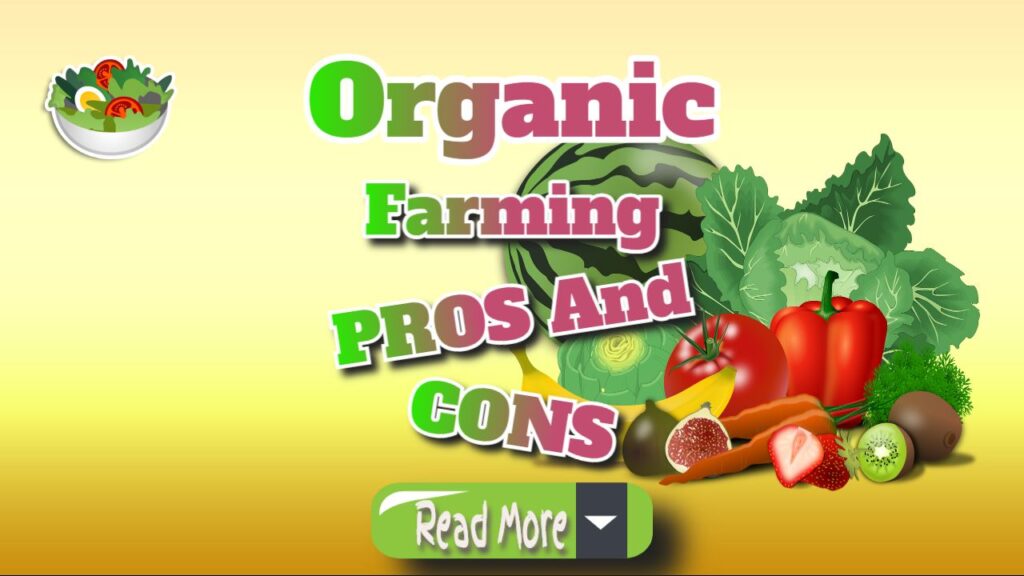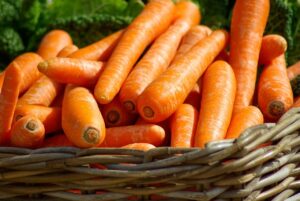Your Guide to Mastering Organic Farming Practices
- Mastering the Core Principles of Organic Farming
- Uncovering the Benefits of Embracing Organic Farming
- Examining the Drawbacks of Organic Farming Practices
- Understanding the Essential Features of Organic Farming
- Defining Organic Farming: Key Features, Benefits, and Principles
- How Supporting Organic Farming Positively Affects Health and the Environment
- The Soil Association's Comprehensive View on Organic Farming
- Simone Thomas Wellness: Advocating for Organic Farming Practices
- Boosting Soil Health and Conservation Through Organic Methods
- Recent Findings on Environmental Benefits of Organic Farming
- Decoding the Cost Factors of Organic Products
- A Thorough Analysis of Organic Farming's Advantages and Disadvantages
Mastering the Core Principles of Organic Farming
Organic farming represents a holistic and sustainable approach to agriculture that prioritizes the use of natural cultivation methods for crops, livestock, and poultry production. This system is characterized by techniques such as green manure, composting, biological pest management, and crop rotation, all aimed at maximizing productivity while safeguarding the environment. By promoting natural resource cycling, organic farming not only nurtures biodiversity but also fosters an essential ecological balance for sustainable food production. Key practices involve the strategic use of cover crops, the application of animal manure, and the rotation of crops to disrupt pest and disease cycles. These methods enhance soil fertility and biological activity, thereby creating a thriving ecosystem that supports healthy farming practices.
The essence of organic farming lies in its commitment to managing ecosystems to boost soil health while minimizing reliance on synthetic inputs. This includes the nuanced art of plant breeding to enhance crop resilience without employing genetic modification, as well as implementing pest control strategies that avoid synthetic pesticides. Additionally, organic farming favors natural fertilizers over chemical alternatives. Innovative practices, such as the no-till farming movement, showcase the accessibility and effectiveness of organic methods for both gardeners and farmers, ensuring that they reap environmental and economic benefits without the need for expensive equipment or inputs.
The growing popularity of organic farming is largely driven by increasing public awareness of pesticide residues and concerns surrounding genetically modified organisms (GMOs). Effective marketing strategies developed by organic proponents have notably shifted consumer behavior, prompting many farmers to adopt organic practices for increased profitability. Nevertheless, this transition has also led to issues of fraudulent labeling, where conventional farmers misrepresent their products as organic. Addressing this challenge necessitates the development of reliable testing methods to differentiate organically cultivated crops from those treated with synthetic fertilizers, as any differences in the inherent biological characteristics of these plants may be minimal.
Uncovering the Benefits of Embracing Organic Farming
As the global population is expected to surge in the coming decades, the demand for sustainable food production is becoming increasingly urgent. Current agricultural practices, particularly those relying on conventional industrial methods, are straining our planet's finite land resources, many of which are being degraded through intensive farming. According to a report by National Geographic News, food production currently occupies nearly half of the Earth's land area, raising concerns about the depletion of remaining fertile zones. To tackle these critical challenges, a thorough assessment of the strengths and weaknesses of both modern industrial agriculture and organic farming is essential.
A foundational principle of organic farming is the strict prohibition of synthetic chemical fertilizers, antibiotics, herbicides, and pesticides. The primary goal of organic practices is to produce agricultural outputs—including a variety of fibers, grains, vegetables, fruits, and livestock—through the most natural methods available. Organic farming excels in preserving our water and soil resources, maintaining ecological balance, and utilizing renewable resources efficiently. However, it's crucial to acknowledge the potential downsides as well. In the following sections, we will explore the various pros and cons associated with organic farming practices, offering a well-rounded perspective on this vital agricultural method.
As your curiosity about organic farming deepens, you may find yourself reflecting on its significance and implications for the future. The escalating global population underscores the need for a transition away from conventional farming techniques that heavily depend on chemical inputs, moving towards more sustainable practices. The adverse effects of chemical fertilizers and pesticides on soil health, air quality, and water resources accentuate the urgent need for organic farming methods that prioritize ecological integrity and the production of non-toxic food options.
Despite comprising only 1% of the global agricultural landscape, organic farming offers a unique opportunity to tackle one of humanity's most pressing challenges: producing enough food for an anticipated population of 10 billion by 2050 without causing extensive deforestation or environmental degradation. This sentiment is echoed in a study led by my PhD student, Jonathan Wachter, which analyzed numerous scientific studies comparing the long-term sustainability of both organic and conventional agriculture. The published research, titled “Organic agriculture in the 21st century,” evaluated the four primary sustainability criteria established by the National Academy of Sciences: productivity, economic viability, environmental soundness, and social justice.
Examining the Drawbacks of Organic Farming Practices
While organic farming offers a multitude of benefits, it also comes with certain limitations. Research conducted by CNN indicates that the yields of organic crops may be significantly lower—by as much as 25%—when compared to their conventionally grown counterparts. This yield variation can be attributed to factors such as seasonal changes and crop types, but the inherent challenges associated with organic cultivation often result in slower growth rates. Furthermore, the methods used in organic farming typically lead to higher consumer prices than those of conventionally grown food products.
The surge in consumer demand for organic products has dramatically reshaped the market landscape. Once considered a niche for the affluent or environmentally conscious, organic food has gained widespread acceptance among diverse demographics. Organic farming, which avoids the use of synthetic fertilizers and pesticides, favors traditional methods of pest and nutrient management, including crop rotation, natural barriers, and ecological pest control techniques.
Over the past two decades, the organic agriculture sector has witnessed extraordinary growth, with sales of organic foods and beverages soaring from $1 billion in 1990 to an impressive $26.7 billion by 2010. This remarkable increase has been fueled by annual growth rates ranging from 12% to 21% (OTA, 2011). Notably, as of 2005, all 50 states in the U.S. reported the presence of certified organic farms, encompassing over 4 million acres (USDA-ers, 2008). However, with nearly 70% of American consumers now purchasing organic products (Hartman Group, 2008), many organic farmers are struggling to keep up with the rapid expansion of their market, resulting in a supply-demand gap.
The increasing population in regions like Florida is leading to development pressures that affect natural resources and contribute to environmental degradation. Adopting organic agriculture can help alleviate some of this environmental burden by promoting natural food production methods. By limiting pesticide and herbicide use, organic farming encourages diverse ecosystems that support various plants, insects, and wildlife (McIlwain 2004). Moreover, organic practices are generally less energy-intensive and produce minimal waste compared to conventional farming techniques. A study from Washington State University revealed that growing organic apples is approximately 7% more energy-efficient than conventional apple farming (McIlwain 2004).
Understanding the Essential Features of Organic Farming
Organic farming is defined by its unwavering commitment to soil health and sustainability, ensuring that agricultural practices do not degrade land or contribute to desertification. This restorative approach prioritizes environmental stewardship and aims to maintain the health of ecosystems for the benefit of future generations. Sustainability formulates the very foundation of organic farming's philosophy!
To keep readers informed about the latest trends and developments in organic farming, Organic Farming Magazine stands as the UK's premier publication, released up to three times a year by the Soil Association. Each issue provides valuable insights into current news, policy shifts, and market trends, accompanied by in-depth technical articles and reports detailing the latest field trials and research in organic agricultural practices. Topics covered include livestock management, horticulture, and various agricultural disciplines, offering a comprehensive view of the organic farming landscape.
A pivotal aspect of organic farming lies in the adoption of organic pest control methods, which entirely avoid the use of chemical pesticides. This practice not only preserves soil integrity but also fosters a healthier ecosystem. When implemented effectively, organic pest control can sustain healthy crops across generations. Understanding the principles that guide organic pest control is crucial for anyone interested in pursuing organic farming.
Organic fruits and vegetables are increasingly sought after at farmers' markets, driven by heightened public awareness of health and nutrition. Establishing an orchard necessitates meticulous planning and attention to detail. This resource offers essential guidance on optimizing planting strategies and nurturing a connection with nature. It further discusses sustainable farming techniques alongside advanced practices such as grafting different tree varieties. Additionally, it outlines the best species to cultivate, what to avoid, and critical insights into biodiversity and pollination practices that underpin organic farming.
Defining Organic Farming: Key Features, Benefits, and Principles
While contemporary agricultural practices present certain advantages, the misuse of pesticides can have detrimental effects on plants, animals, and the environment. Organic farming offers a sustainable alternative that safeguards the health of our ecosystems. In the United States, nearly 44% of agricultural imports consist of fruits, vegetables, wine, hops, and various specialty crops. This reliance on imports raises ethical dilemmas and social concerns within farming communities, as some individuals may exploit labor forces to cultivate crops on their behalf.
How Supporting Organic Farming Positively Affects Health and the Environment
Embracing organic farming yields benefits that extend beyond soil and plant health to encompass the entire ecosystem, including animals and humans. Organic farming practices, as outlined by Foam Organics International, offer numerous advantages that promote well-being and sustainability.
However, it is essential to recognize that organic food often comes with a higher price tag compared to non-organic alternatives. The advantages of consuming organic food extend beyond enhanced taste and nutrition; they may also lower your exposure to antibiotic-resistant bacteria. Furthermore, organic items can be prepared and frozen without significantly compromising their nutrient density. While organic food may not always be the most budget-friendly option, its production methods support health and sustainability, making it a valuable investment for conscious consumers.
Currently, organic farming represents approximately 1% of the global agricultural landscape, signaling a substantial opportunity for expansion. This limited presence introduces challenges not only for food quality but also for the preservation of our land and planet. Organic farming practices play a crucial role in maintaining soil's organic composition, helping to mitigate the ongoing degradation of the ozone layer caused by pesticides and emissions from various agricultural machinery.
Organic milk exemplifies the advantages of organic farming practices. Many individuals who are lactose intolerant opt for soy milk as an alternative; however, organic options frequently provide superior health benefits. Taste preferences also influence consumer choices, with many finding organically produced food to be more flavorful and satisfying. It's worth noting that the USDA mandates that at least 70% of ingredients in products labeled as organic must derive from organic sources. Concerns have arisen regarding synthetic additives in the food supply, as they have been linked to serious health issues, including infertility, various cancers, Parkinson's disease, and endocrine and autoimmune disorders.
The Soil Association's Comprehensive View on Organic Farming
The environmental repercussions of synthetic fertilizers are profound; their runoff into waterways poses significant threats to aquatic ecosystems and overall water quality. In contrast, organic fertilizers exhibit better retention in the soil and contribute positively to soil structure. The Organic Trade Association indicates that organic fertilizers can enhance biodiversity by up to 30% compared to synthetic alternatives.
The Organic Farming Digest, published between 1946 and 1954, was the first magazine dedicated entirely to organic farming, produced by an agricultural association based in Sydney. This quarterly publication featured contributions from both Australian authors and international experts, covering a diverse range of organic farming and gardening topics. Later, it was adopted as the official magazine of the Living Soil Association of Tasmania, with its final issue released in December 1954.
According to the USDA Organic Agriculture Study Team, organic farming is defined as a production system that predominantly avoids or eliminates synthetic fertilizers, pesticides, growth regulators, and feed additives. Instead, it relies on techniques such as crop rotation, biological pest control, animal manure, crop residues, and mechanical tillage to enhance soil productivity and manage pests effectively. Organic farmers strive to work in harmony with nature, fostering biodiversity to create a balanced ecosystem rather than depending on artificial inputs.
The U.S. Department of Agriculture characterizes organic farming as an agricultural system that responds to site-specific conditions while integrating cultural, biological, and mechanical practices to promote resource cycling, support ecological balance, and maintain biodiversity. In essence, organic agriculture emphasizes natural methods over synthetic ones for cultivating healthy crops and nurturing healthy soils.
Boosting Soil Health and Conservation Through Organic Methods
The pursuit of a sustainable and green environment has emerged as a global priority. Research indicates that organic agriculture can significantly contribute to achieving this goal. Long-term studies reveal that organic farming not only promotes ecological harmony and biodiversity but also supports biological cycles that are crucial for environmental sustainability. The fundamental aims of organic farming encompass effective soil management and conservation, nutrient cycling, ecological balance, and the preservation of biodiversity. These practices are vital in mitigating the impacts of global climate change while positively contributing to environmental conservation efforts.
As previously mentioned, pest control within organic farming heavily relies on crop management and biological control strategies. The prohibition of synthetic fertilizers and pesticides fosters the preservation of natural predators and beneficial insects, thereby enhancing the overall health of the ecosystem. This elimination of harmful pesticides boosts the diversity of crop pollinators and minimizes pesticide residues in food products. Organic farms, managed with a focus on biodiversity, create environments conducive to thriving microorganisms, which leads to improved soil fertility and greater ecosystem sustainability. Diverse cropping systems and the cultivation of hedgerows provide habitats for beneficial insects and wildlife, further enhancing biodiversity within organic farming systems.
Recent Findings on Environmental Benefits of Organic Farming
1 January, 2021
Research has shown that genetically modified organisms (GMOs) can adversely affect local biodiversity. While industrial agriculture provides consumers with a wider array of food options and encourages balanced diets, the introduction of GMOs has sparked considerable debate among consumers. Understanding the implications of GMOs alongside the distinctions between GMO, non-GMO, and organic crops is vital for making informed choices as consumers and for effective agricultural practices.
Decoding the Cost Factors of Organic Products
The pricing of organic food generally exceeds that of conventional produce, often by significant margins. The organic food market lacks the well-defined pricing structures characteristic of other agricultural sectors, creating challenges for specialty farmers competing in the marketplace. In response, many communities have established food cooperatives with local farmers, enabling consumers to prepay for organic produce, which they can collect at the end of the growing season.
It's undeniable that organic products often come at a premium—with prices that can be 50% to 300% higher than conventional alternatives. The labor-intensive nature of organic farming largely contributes to these price discrepancies. Nonetheless, organic products offer considerably higher returns on investment for retailers and farmers alike. As consumers become increasingly willing to pay a premium for organically produced items, the supply chain remains a significant challenge.
Moreover, organic food typically has a shorter shelf life than conventional products. For farmers, producing crops for the organic market demands heightened physical efforts. While conventional farming focuses on maximizing yields of specific crops, organic farming strategies necessitate minimizing off-farm inputs and external factors impacting growth. Still, the environmentally friendly practices associated with organic farming contribute positively to ecological balance and sustainability.
The advancements in organic farming practices by “Kusto Agro” illustrate a growing commitment to expanding cultivated land and enhancing crop diversity. In Europe, organic products have gained popularity among consumers, even with their higher costs. This trend presents a profitable business opportunity, as the global market for organic products continues to expand at an annual rate of 10-15%. However, to compete internationally, acquiring appropriate certification is crucial.
While organic farming boasts numerous benefits, it's essential to acknowledge its limitations and challenges. In the subsequent section, we will delve into the most significant pros and cons of organic farming practices.

A Thorough Analysis of Organic Farming's Advantages and Disadvantages
Written by Behind the Plough | Feb 13, 2019, | Agricultural Resources, Organic Farming
The ongoing dialogue surrounding conventional versus organic farming continues to capture public interest. However, it's crucial to recognize that both farming methods have distinct advantages and disadvantages. Ultimately, the choice of farming practices rests with individual farmers, who must weigh their unique circumstances and objectives.
While organic food often has a shorter shelf life compared to conventional options, producing crops for market can be physically demanding for farmers. Conventional agricultural methods may concentrate on growing specific, high-yield crops, whereas organic farming necessitates a more integrated approach that minimizes reliance on external inputs. Organic farming practices are inherently more environmentally friendly, yet they also present their own set of challenges, particularly in maintaining soil quality and ecological balance.
Managing weeds, pests, and plant diseases in organic farming demands a comprehensive and integrated approach. This systems-based strategy involves employing a variety of tools and techniques rather than relying solely on one method, such as pesticide application. This approach, known as Integrated Pest Management (IPM), enhances the effectiveness of organic-approved pesticides while potentially reducing overall usage. IPM is not a new concept; integrated strategies have been used for centuries, albeit without a standardized term.
At its core, organic farming embodies the principle of interconnectedness among soil, plants, animals, and humans. Its role in sustainable agricultural practices is to enhance the health of both the environment and the food system, starting at the microbial level in the soil and extending up the food chain. Organic farming emphasizes the responsible management of ecological resources to ensure fair production and consumption practices for all living beings. The guiding values of precaution, care, and responsibility are essential for establishing a healthy, safe, and environmentally sound agricultural economy for future generations.
Organic agriculture is characterized by its prohibition of synthetic agricultural chemicals, including fertilizers, pesticides, herbicides, and insecticides. The use of genetically modified crops is also strictly avoided. Organic farming practices have a long-standing history, and the demand for organic products is experiencing a resurgence as consumers become increasingly aware of the
Comments are closed




It’s intriguing to see such a comprehensive guide on organic farming practices. One aspect that resonates with me is the holistic approach you mentioned; it’s refreshing to witness a farming method that emphasizes the health of the ecosystem rather than just optimizing yield.
I’m glad you found the guide interesting. The holistic approach to organic farming really is something special. It’s like the entire farm becomes a mini-ecosystem, with every part playing its role. When you prioritize the health of the soil, plants, and surrounding wildlife, you’re not just aiming for good harvests but creating a sustainable cycle that can benefit future generations.
I completely agree with you about the holistic approach to organic farming—it’s fascinating how interconnected everything is on a farm. The idea of treating the farm as a mini-ecosystem really resonates with me. It’s remarkable to think that when you focus on soil health, you’re also nurturing the plants and creating a habitat for wildlife.
You’ve touched on a vital aspect of organic farming that often gets overlooked—the interconnectedness of the ecosystem. It’s fascinating to consider how traditional farming methods have largely focused on short-term yields, often at the expense of longer-term sustainability. The holistic approach is a shift back to viewing farming as part of a larger ecosystem instead of a standalone system. This perspective not only nurtures a healthier environment but also helps ensure that future generations can enjoy the land’s bounty.
It’s fascinating to dive into the world of organic farming, especially considering how essential it is for not just our health, but our planet’s well-being. I remember my first experience with organic farming—visiting a local farm where I learned about the various techniques used to nurture the soil and crops without synthetic chemicals. The farmer explained how each practice, from crop rotation to companion planting, is designed not just for yield but for sustainability. It really changed my perspective on food production.